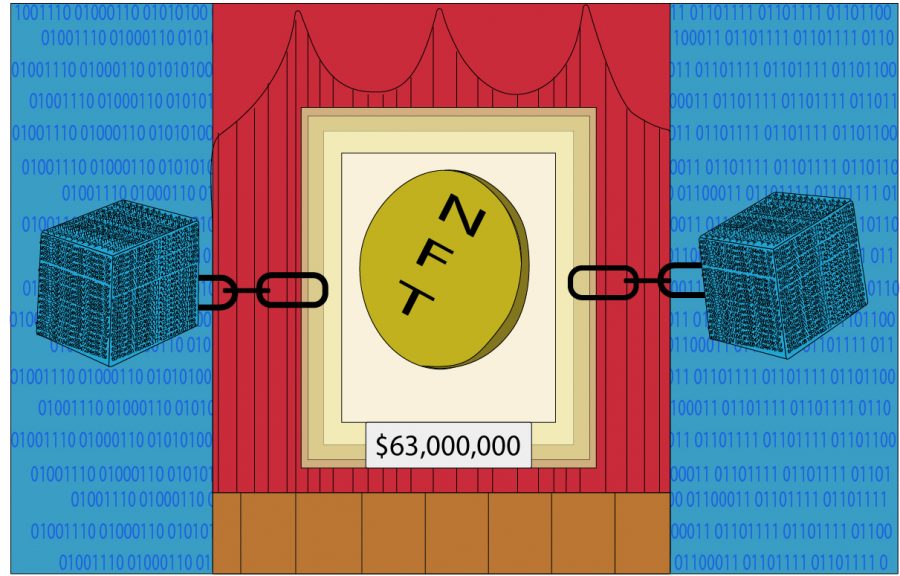NFT’s have recently taken the art world by storm, with many high profile auction sales for these digital pieces of artwork. The acronym stands for Non-Fungible Token, and the concept started off with Crypto Kitties in 2017. These were NFTs of cartoon cats that were given away pretty much for free. The idea sat dormant for about two years and suddenly became mainstream in March of 2021 due to the high profile sale of the NFT “Beeple” for $69 million at the Christie’s art auction house. After the story blew up, many other high profile NFTs were sold by celebrities and big companies such as Logan Paul, Nike, and the NBA. One of the most recent cases of these high profile NFT sales was of the Disaster Girl meme for $430,000. Yet even with all of this money being thrown around, many wonder if NFTs have a future or are doomed to be irrelevant in the following months.
NFT’s are created via a process known as Proof of Work, which is similar to the way cryptocurrencies are made. This is done by taking the original digital asset — or in this case, artwork — and adding it onto a block chain. A block chain is essentially a history of who traded hands with the digital asset and verifying the chain proves that this was the original digital asset. This, in essence, creates a unique unchangeable token of the asset, which allows an artist to sell their digital work like a physical painting. However, this process is extremely energy intensive because of the need to rent out supercomputers to verify each block inside the blockchain. As a result, there has been an extreme amount of controversy around the energy and carbon output in the creation of these NFTs. The amount of energy the NFT market currently consumes is equal to the energy output of small countries.
Despite all the energy and work needed to create an NFT, it’s up for debate what a person actually gets when they buy one. The owner of the NFT doesn’t have exclusive rights to the image nor anything resembling a copyright of the image. All they really get is a verification of the original image. Think of it as a certificate of authenticity for a digital asset you don’t actually have. This has led to many dismissing NFTs as a trendy fad with no real value.
While the applicability of NFTs in the art world is debatable, the technology behind it opens new doors in block chaining and cryptocurrency. One potential way to implement NFTs is in the selling of sport or event tickets. This could be used to prevent ticket scalping or allow the sports team to receive part of the profits for the scalped ticket. There are also hopes to introduce NFTs into the world of videogames as a way to verify in-game items.
NFTs are in a position where they are only relevant via the art world. They are incredibly overhyped as of now because of the novel idea of owning a “digital asset.” NFTs will likely follow the same trend as crypto currency with the hype slowly fading away but the technology never reaching total irrelevancy. However, NFTs will eventually break outside the art world and the technology behind it is an exciting prospect for how we use and view digital transactions in the future.
















